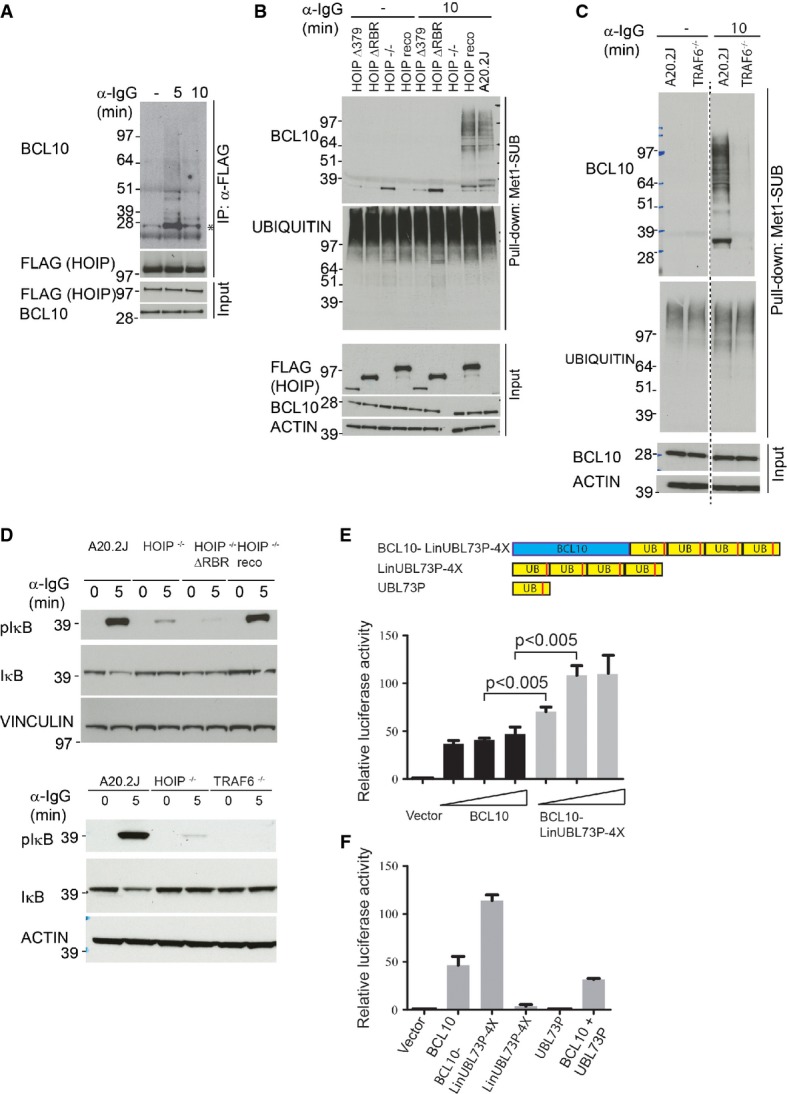Figure 8.

- A HOIP interacts with BCL10. A20.2J HOIP−/− cells reconstituted with the full-length FLAG-HOIP were stimulated with α-IgG for the indicated times, HOIP was immunoprecipitated with α-FLAG antibody, and the immunoprecipitates were immunostained with BCL10 antibody. The amounts of immunoprecipitated HOIP, and equal expression of FLAG-HOIP and BCL10 in whole-cell lysates used for the IPs, are shown in the lower blots. The asterisk indicates unmodified BCL10.
- B HOIP is required for BCL10 linear ubiquitylation. A20.2J, A20.2J HOIP−/−, and A20.2J HOIP−/− cells expressing the HOIP full-length or the indicated HOIP mutants were stimulated with α-IgG followed by Met1-SUB pull-down and immunoblotting as described in Fig7A.
- C TRAF6 is required for BCL10 linear ubiquitylation. A20.2J wild-type and TRAF6−/− cells were stimulated with α-IgG for 10 min, and linear ubiquitylated proteins were pulled down with Met1-SUB and immunoblotted with BCL10 and ubiquitin antibodies. Equal expression of BCL10 and actin was verified in the input material.
- D HOIP and TRAF6 function is important for BCR-induced IκB phosphorylation. A20.2J wild-type, HOIP−/−, TRAF6−/−, and HOIP−/− cells expressing HOIP ΔRBR were stimulated with α-IgG for the indicated time points, and lysates were immunostained with pIκB and IκB antibodies. Actin and vinculin staining serves as loading control.
- E, F BCL10 linear ubiquitin fusion protein activates NF-κB. HEK293T cells were co-transfected with increasing amount (0.5, 1 or 2 μg) of BCL10, or BCL10-LinUBL73P-4X construct together with pNF-κB Luc and pRL-TK Renilla. NF-κB transcriptional activity was measured 24 h later using Dual-Glo® Luciferase Assay System (Promega). In (F), NF-κB transcriptional activity was measured in HEK293T cells co-transfected with 1 μg of the indicated plasmids. Error bars indicate mean ± SEM of 3 (E) or 2 (F) independent experiments. Statistical significance was determined by two-tailed Student's t-test.
